Peace Interrupted -Why have the Naga Accords repeatedly failed?
With the appointment of Ravindra Narayana Ravi, former Deputy National Security Advisor (Internal Affairs) to Indian National Security Advisor (NSA) Ajit Doval as the interlocutor of Indo-Naga peace process, as the Governor Nagaland on 20 July 2019 and the abrogation of Article 370 and 35 A on 5th August 2019, the Naga peace initiative has been inching towards a precipice. When R N Ravi, in his gubernatorial address on 1 December 2020, ruled out the demand of a separate Naga flag and constitution, only the sanguine can still hope for a positive outcome, argues political analyst and Delhi University History teacher, Kumar Sanjay Singh. This explanatory article has lessons for other struggling nationalities and regional identities.
![With the appointment of Ravindra Narayana Ravi, former Deputy National Security Advisor (Internal Affairs) to Indian National Security Advisor (NSA) Ajit Doval as the interlocutor of Indo-Naga peace process, as the Governor Nagaland on 20 July 2019 and the abrogation of Article 370 and 35 A on 5th August 2019, the Naga peace initiative has been inching towards a precipice. When R N Ravi, in his gubernatorial address on 1 December 2020, ruled out the demand of a separate Naga […]](https://www.theworldsikhnews.com/wp-content/uploads/2021/01/Nagaland-slider-360x266.jpg)
INTRANSIGENCY ON THE QUESTION OF NAGA CONSTITUTION AND FLAG has created a situation where the peace process is surviving from one deadline to another -first 31 October 2019 and then September 2020. Unravelling of a peace process that has since 1995 (when Shri. Narasimha Rao met the leadership of NSCN (IM) in Paris), survived successive governments—that of Shri A B Vajpayee (lasting only for thirteen days), Shri H D Deve Gowda, Shri I K Gujral, Shri A B Vajpayee, Dr Manmohan Singh and Shri. Narendra Modi—is bound to invite concern and scrutiny.
Immediate and individual reasons do not explain the persistent failure of Naga Accords
Breakdown of peace is an affliction of every Indo-Naga Accord, a fragility underscored by the durability of the Mizo Peace Accord signed on 30 June 1986. In contrast successive Naga Accords—Akbar Hydari Agreement (1947), The 16 Point Agreement (1960), and The Shillong Accord (1975)—failed to achieve enduring peace. The shared failure of Naga Accords suggests that analysis of the causes for this failure should not focus only on the alleged capriciousness of the leadership of the NSCN (IM) and the democracy deficit in the organization, but also take account of the long-term structural causes.
The shared failure of Naga Accords suggests that analysis of the causes for this failure should not focus only on the alleged capriciousness of the leadership of the NSCN (IM) and the democracy deficit in the organization, but also take account of the long-term structural causes.
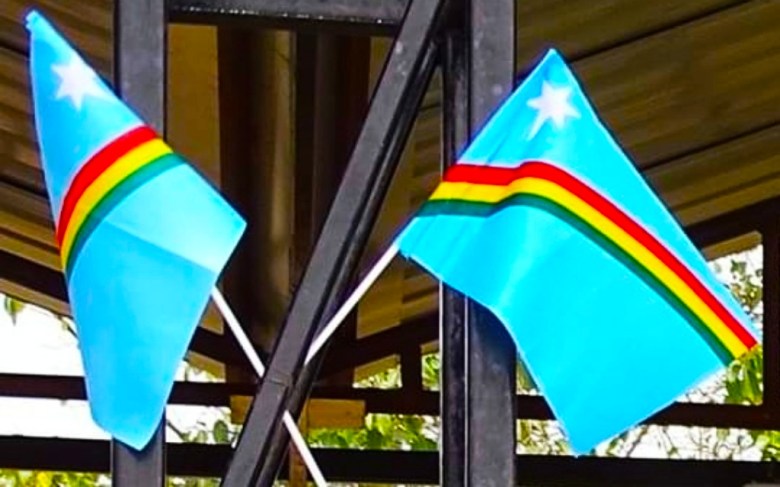
Long-term structural causes of the instability of Naga Accords
Three long-term structural developments have bequeathed endemic instability to the Naga Accords.
First, the accords are dictated by a trend where every successive accord grants lesser political rights to the Nagas. The Akbar Hydari Agreement included nine clauses demarcating the judicial, executive and legislative powers of the NNC. It also recognized the power of the NNC to control the land and resources of the Naga inhabited areas, as well as the mechanism to impose, collect and spend land revenue and tax. The accord clearly stated that the Nagas had the right to develop themselves according to their wishes and stressed upon the desirability of bringing them under one unified administrative unit as far as possible.
The 16 Point Agreement, while it granted statehood to Nagaland, was more restrictive. The clauses of the accord can be divided into two categories. The first extended to the Nagas, rights provided to other ethnic, cultural and religious minorities such as the right to freely practice their custom and religion, prohibition on the transfer of tribal land and the right to establish administrative local bodies to deal with the customary laws, etc. It also gave them the right to representation. These are rights granted to every citizen who accepts Indian nationhood; thus, no rights specific to the Nagas were accorded.
The 16 Point Agreement, while it granted statehood to Nagaland, was more restrictive.
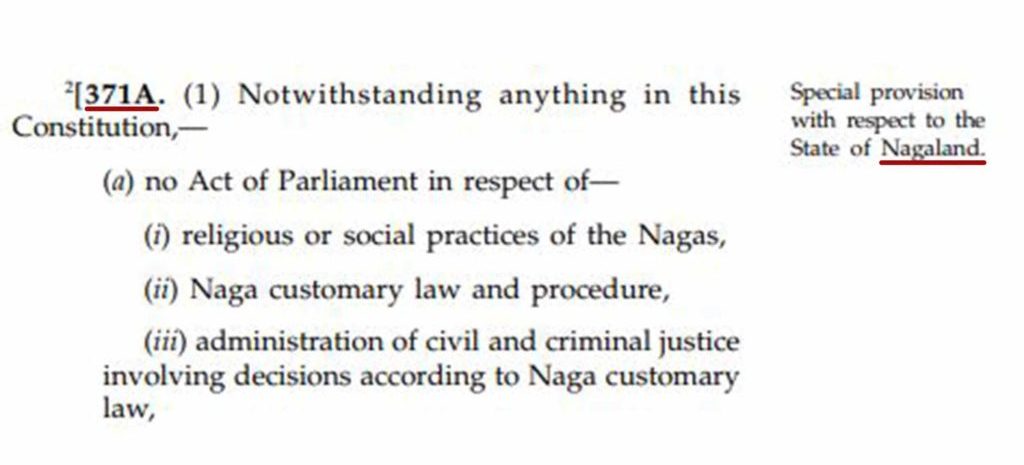
The second category deals with clauses laying down the specific relationship between the government of India and Nagaland. Under the 16 Point Agreement, special powers were granted to the Governor for maintenance of law and order till armed hostilities continued, empowering him to act on his individual judgement. The Governor was given sole administrative jurisdiction over Tuensang district. The only curb on his authority was the Regional Council, but even that had the Deputy Commissioner (an official subordinate to the governor) as its Ex-officio chairperson. This provision was finally incorporated in the constitution by the thirteenth amendment act of 1962, sec. 2 (w.e.f. 1.12.1963) as the article 371A. Thus, the Governor, a nominated authority, was empowered to override the duly elected civil authority.
The Shillong Accord of November 1975, offered no rights.
The Shillong Accord of November 1975, offered no rights. Clause 3 (ii) of the main accord and the five clauses of the supplementary agreement laid down the terms and modalities of the surrender of the underground guerrillas and their disarmament.
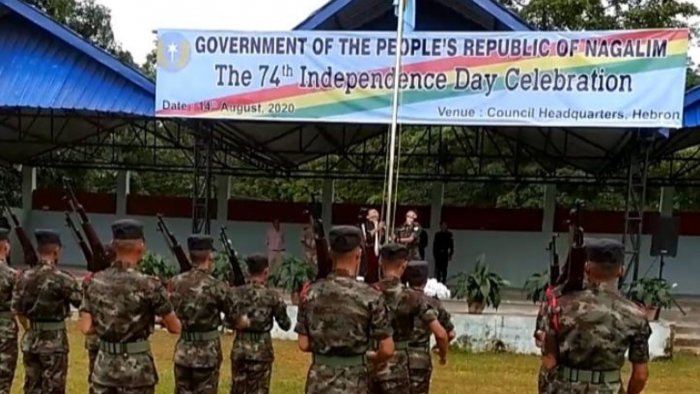
Second, that the 16 Point Agreement has structured the Naga polity which is founded on a series of divisions:
- i. The accord insisted that the signatories will not be the representatives of the NNC but of the Naga People’s Convention. Thereby creating a legal politics within the constitutional framework, while the military movement was declared as a law-and-order problem and the governor suitably empowered to deal with it. The latter was driven underground due to the imposition of Armed Forces Special Powers Act (1958) and the Naga Security Regulation of 1962.
- ii. The accord divided the Nagas administratively into four states.
- iii. The accord was preceded and followed by a pacification program along tribal and regional lines. After 1964 a district-wise approach of pacification was implemented— a logical corollary of the idea that had ceded to the governor the sole administrative jurisdiction over Tuensang district. Tribalism was deployed to achieve political goals. The rivalry in the ranks of the NNC along tribal lines reached a flashpoint with the killing of General Kaito, leading to a series of killings along tribal lines.
These divisions fragmented the support of NNC and eroded its legitimacy, nevertheless, they obviated the possibility of achieving pan Naga consensus, a must for securing lasting peace.
The 16 Point Agreement created the Nagaland state but its benefits did not percolate to the Naga tribes outside the state.
Third, that the 16 Point Agreement created Nagaland state but its benefits did not percolate to the Naga tribes outside the state. Consequently, the centre of gravity of Naga movement shifted out to the disgruntled tribes mostly outside Nagaland. NSCN was founded in 1980 under the leadership of Messers Muivah, Issac Swu and Khaplang. This shifting of the centre of the Naga movement meant that the rights offered by the 16 Point Agreement proved inadequate to the task of ensuring peace. Consider the fate of Mizo accord if the Lushai tribe was kept out of Mizoram founded as the 23rd state of India in 1986.
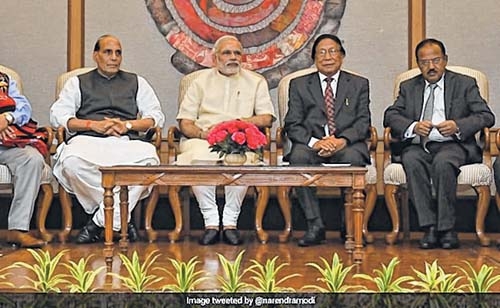
Shadow of the 16 Point Agreement on the current Naga peace process
The Framework Agreement, signed on 3 August 2015, delineates two interrelated levels of negotiation. First dealing with shared sovereignty between two entities, including the fraught question of separate Naga flag and constitution. Second dealing with competencies or demarcation of rights and jurisdictions of the central and Naga institutions of governance and administration, including a special administrative arrangement for Naga inhabited areas outside Nagaland.
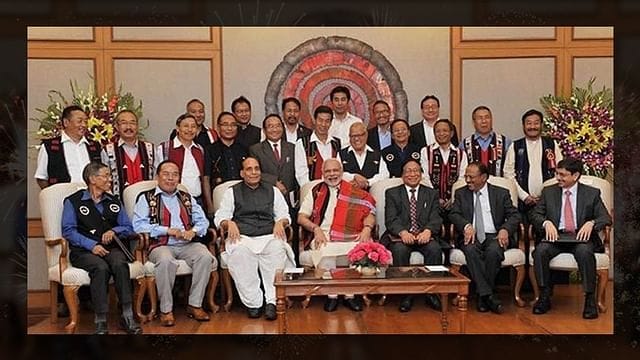
Negotiations on shared sovereignty have been interrupted on the question of a separate Naga Flag and constitution. Nagaland Governor R N Ravi has repeatedly expressed his aversion for the demand since mid-2019, its forthright rejection in his speech on 1 December 2020, is in keeping with his position. Then to stall negotiations on separate Naga constitution and flag, violation of law and order by armed groups has been grafted onto the peace process. The Governor’s letter to the Chief Secretary, dated 14 February 2020, asked for “a database of State Government employees’ family members and relatives in underground organisations”. In a letter to the Chief Minister Neiphiu Rio, dated 16 June 2020, the Governor cited the deteriorating law and order situation to invoke article 371 A clause (1)(b), to extend control over transfer and posting of officials responsible for maintaining law and order of and above district level.
The Framework Agreement, signed on 3 August 2015, delineates two interrelated levels of negotiation. First dealing with shared sovereignty between two entities, including the fraught question of separate Naga flag and constitution.
Gubernatorial squeamishness towards armed groups is belied by the fact that the government of India was aware of the nature of the groups prior to initiating the talks; and that the Governor in a letter to the Chief Secretary in late October 2020 sought security to leaders of a section of the armed groups. Depicting a negotiating party as an extra-legal armed group, severing its ties with civilians and utilizing existing divisions within the Naga groups to achieve desired political ends are all derivative of the official mindset from the days of the 16 Point Agreement.
Negotiations on competencies have been relatively smooth-sailing with both parties repeatedly proclaiming, since 2019, satisfactory conclusion of the talks. Its implementation will, however, witness serious unrest in Arunachal Pradesh, Assam and Manipur. Civil society groups in Arunachal Pradesh and Manipur have registered their objections on several occasions.
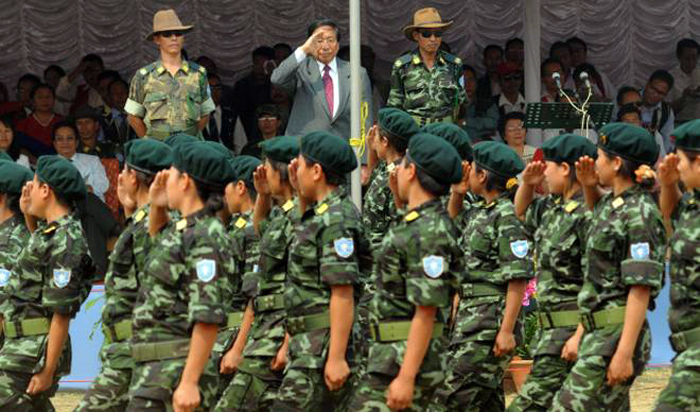
The Government of Manipur in its press release dated 18 August 2020 denied having any discussion with the government of India on the proposal to form “two autonomous district councils…in Arunachal Pradesh and Manipur under the provisions of the Sixth Schedule of the Constitution of India.” “Further, the State Government had earlier requested MHA (the Indian Ministry of Home Affairs) to make available a copy of the draft Accord to the State Government at least one month before the date fixed for a consultation so that the State Government may be in a position of express (expressing) its views and comments.”
The visceral response to suggestions for redrawing of administrative units is a result of the sustained effort of the colonial administrative/cartographic endeavour to tie ethnic populations to designated geography through a process of ethnicization of territories.
The visceral response to suggestions for redrawing of administrative units is a result of the sustained effort of the colonial administrative/cartographic endeavour to tie ethnic populations to designated geography through a process of ethnicization of territories. Ethnic homelands were created and sustained by administrative instruments such as the inner line permit. These instruments, especially the inner line permit, were also incorporated in Article 371 especially in the case of North-eastern states of India, most of which have been accorded specific protections under this Act.
During the anti-CAA agitations, protection from the settlement of outsiders, preventing outsiders to purchase immovable property and inner line permit was extended to areas hitherto not covered, such as Manipur valley, Meghalaya, etc.
Overlaying of the instrumentalities of Article 371 upon colonial construction of ethnic homeland has resulted in the fragmentation of distinct but related communities of north-east into insular ethnicities, each demanding its homeland. This underlies the endemic ethnic conflicts such as the Naga-Kuki conflict or the conflicting territorial claims in Manipur between Nagas and Meiteis. This also explains why boundary disputes between states in Northeastern India, such as that between Assam and Nagaland, or the more recent dispute between Assam and Mizoram, often turn violent. However, this potent ethnic conflict over territory allows the central agencies to break their political aspiration by playing one ethnic claim against another. Evidently, implementation of the agreed-upon “competencies” may be confounded by this possibility of the divide and rule policy.
Stasis over the demand of a separate Naga flag and constitution and the anticipated disruption in the competencies in the Naga inhabited areas outside Nagaland could scupper the talks.
Predicaments and possibility of peace
Stasis over the demand of a separate Naga flag and constitution and the anticipated disruption in the competencies in the Naga inhabited areas outside Nagaland could scupper the talks. In an interview on 16 October 2020 Th. Muivah, General Secretary NSCN (IM), had unequivocally refused to sign an agreement that did not include a separate Naga flag and constitution. Proposals to bypass NSCN (IM) to bring an early conclusion to the talks are inadvisable. Constraints on the implementation of the competencies outside of Nagaland would, by preventing percolation of benefits to Nagas in Arunachal, Assam and Manipur, erode any possibility of peace.
The urgency to successfully conclude the talks with NSCN (IM) notwithstanding, is there a resolution to the demand of a separate Naga flag and constitution, and the anticipated hostilities to the implementation of competencies?
A disgruntled NSCN (IM) poses an even greater challenge. Its return to the old ways of the 1980s could reconfigure the military movements in the region, thereby reducing to insignificance the much-touted advantages from high profile surrenders of underground leaders. Avoiding political turmoil at a time when there is a reported build-up of Chinese military infrastructure and deployment of troops and armaments near Doklam and Arunachal cannot be overstated. The urgency to successfully conclude the talks with NSCN (IM) notwithstanding, is there a resolution to the demand of a separate Naga flag and constitution, and the anticipated hostilities to the implementation of competencies?
The demand for a separate flag isn’t necessarily a challenge to the sovereignty of the Indian state. Nagas are neither the first nor the only region to demand a separate flag.
The demand for a separate flag isn’t necessarily a challenge to the sovereignty of the Indian state. Nagas are neither the first nor the only region to demand a separate flag. Even if we discount the now withdrawn flag of J&K, Tamil Nadu had proposed for a flag in 1970. Karnataka made a similar proposal in 2018, which was withdrawn in August 2019, when BJP came to power in the state. These demands are not a challenge to the Indian Constitution. In the significant S. R. Bommai v. Union of India, the Supreme Court declared that there is no prohibition in the Constitution of India for a state to have its own flag. Understanding demand for a separate flag as a regional political aspiration could ease the logjam in negotiation.
In the significant S. R. Bommai v. Union of India, the Supreme Court declared that there is no prohibition in the Constitution of India for a state to have its own flag. Understanding demand for a separate flag as a regional political aspiration could ease the logjam in negotiation.
As Prof. Partha Sarthi Gupta of the Department of History, Delhi University, in his presidential address to the Indian History Congress in 1998 had speculated how regional political aspirations in independent India could have been better accommodated if enough attention had been paid to the histories of the Baltic nations.
“The regional political aspirations in independent India could have been better accommodated if enough attention had been paid to the histories of the Baltic nations.”
To accommodate the conflicting territorial claims of ethnic communities of the northeast, it will be well worth our while to study the dynamics of the formation of ‘pass state’ in Switzerland, “or rather, the confederation of Swiss cantons.” A significant trove of research exists in Netherlands and Switzerland who have established a special type of political state called the ‘consociational state’ where the political elites of distinct social groups succeeded in establishing a viable pluralistic state by a process of mutual forbearance and accommodation.
Dixi et salvivi animam meam!! -I have spoken and saved my soul.
